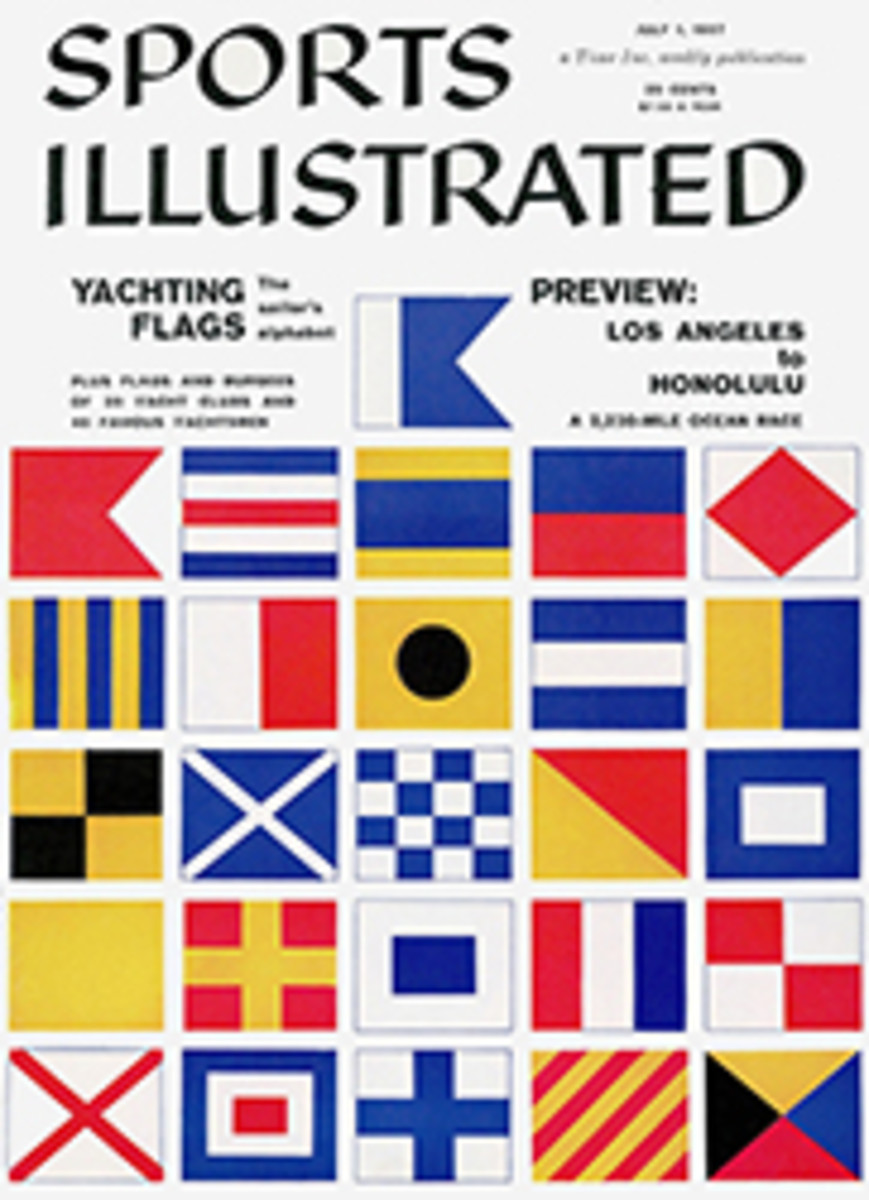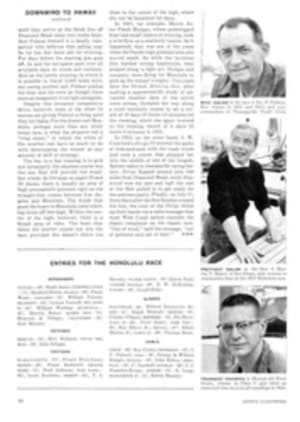
CORNELL BACKS UP ITS NOTICES
Phil Gravink began to feel sick with a mile to go. Slowly, weakly, his belly began to float to his throat. He tried to swallow, but there was no moisture. He thought frantically, "Not now. Don't get sick. Not now." He was swinging his oar at 29. The beat felt like 40.
Gravink was the stroke on the Cornell varsity crew. The "crew of the generation," the experts called it. So good that the Intercollegiate Rowing Regatta was supposed merely to prove who was second best: Navy, Princeton, Syracuse, Penn or maybe Stanford. Columbia, Wisconsin, MIT and Dartmouth were just there for the cruise. That was the way it figured last Saturday morning, just before the race. The lake was calm then, and the wind had not started to blow.
When the 10 shells lined up at the start of the three-mile course on Onondaga Lake that afternoon, the weather had changed. A 15-mile-an-hour quartering wind blew steadily from the south shore. That made it difficult for the coxswains to line the shells up on the stake boats for the start. It took 15 minutes of tense maneuvering before all coxswains were satisfied with their positions. Referee Tip Goes wasted no time firing the starting cannon, and the suddenness of its boom caught Cornell off guard.
Pennsylvania was ready. Within a quarter mile, the Red and Blue had pulled out two lengths on Cornell. It was the effort of making up distance that was almost sickening Gravink by the two-thirds mark.
Finally Carl Schwarz, the Cornell coxswain, screamed through his megaphone: "We're even, Phil! Raise it to 32." Schwarz was skinny—almost cadaverous—but his voice boomed at Gravink. Somehow Gravink fought off nausea and raised the stroke. His throat felt as though it would close with the effort, but with mechanical precision he brought it to 32 and the Cornell shell moved, almost imperceptibly, on the Pennsylvania boat. The Big Red gained a seat on Penn.
George Ford, the Cornell No. 7, kept his head down and pulled in perfect rhythm with Gravink. The sweat trickled down his nose, burned his eyes behind the glasses. "Where are we, Carl," he gasped.
"Three-quarters. Cut the talking—save it for that oar," barked Schwarz. The coxswain glanced to the right, where the Pennsylvania boat was moving, smoothly, swiftly in lane three, stroke for stroke with the Cornell shell. He had already called on his tiring crew for two power tens—emergency bursts of 10 strokes, all out—to make up the two-length lead Pennsylvania had gained with its magnificent start. Now he needed another if Cornell was to win as predicted.
"Ten for the coach. Give me a power ten for the coach," he implored. He rapped out the beat on the side of the shell with the wooden chocks he held in each hand. Eight oars sliced the water and with incredible power lifted the bow of the 60-foot cedar craft out of the water. Cornell began to move.
Up in the "engine room" at No. 4, Todd Simpson, the Oklahoman, pulled without expression. He leaned his 6-foot 5-inch frame into the slide and bowed his oar with the force of his drive. The oar handle slammed into his belly viciously as he finished out each stroke. The rough handle soon had his stomach raw, and blood stained his shirt. The others pulled as hard, if not as obviously. For 10 strokes they exerted almost the ultimate of human effort on each sweep. They would win it now—or finish nowhere. They had the form. But the stamina?
For three weeks before the IRA, Cornell had been practicing twice a day on Lake Cayuga. Coach Harrison (Stork) Sanford drove the crews hard, building endurance. Twelve-mile workouts were the rule, not the exception. Some days his oarsmen—already shorn of excess weight—would lose as much as six or seven pounds. He had won the short races—the Carnegie Cup at two miles, and the Eastern Sprints-at 2,000 meters, edging Yale's Olympic championship crew in both. But the three-mile IRA was the true test of a crew in Sanford's mind. He wanted them to be ready, conditioned. They were.
Cornell produced its third power ten with little more than a half mile to go. Cornell was by now a quarter length in front of Pennsylvania, which was rowing the race of its career. Schwarz saw Gravink in front of him, tiring fast, having trouble breathing. He upped the stroke to 34, screaming out the beat: "Stroke! stroke! stroke!" With a quarter to go, Schwarz urged Gravink to 37. He pounded a tattoo on the sides of the boat, exhorting the last scrap of life out of his eight oarsmen. The stroke went up: 35, 36, 37. Clayt Chapman and Bill Schumacher, the No. 6 and No. 5, both 195-pounders, put all their beef into it. Up front Bob Staley and Dave Davis, No. 2 and No. 3, brought it up. They hit 37, mechanically, near exhaustion.
The roar went up from the crowd. Schwarz screamed, "We're over! We're over! We're over!" Phil Gravink slumped, almost went over the side and lay on the bottom of the boat, completely spent, arms hanging in the water. The rest fell forward over their oars. They won by a length and a half. They had rowed three miles in 15 minutes 26.6 seconds. Penn was second, Stanford, 3½ lengths back, in third.
At the boathouse, Sanford beamed at the all-senior crew. He was satisfied. "Henley next," he said. "I'm glad we've got one more against Yale. I've had a lot of crews, but I can't remember hating to see a season end as much as this one."
PHOTO
SOME 200 YARDS FROM FINISH LINE, HARD-PULLING CORNELLS (NEAREST SHELL) SURGE TOWARD EVENTUAL LENGTH-AND-A-HALF VICTORY ON LAKE ONONDAGA OVER GALLANT UNIVERSITY OF PENNSYLVANIA CREW
PHOTO
BIG RED OARSMEN HUSTLE COXSWAIN TO HIS DUNKING

